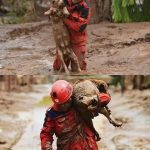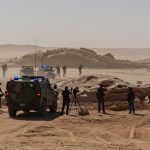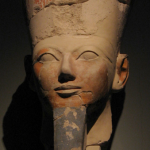Up Close with the Gentle Giants: Saving Endangered Mountain Gorillas in the Heart of Congo
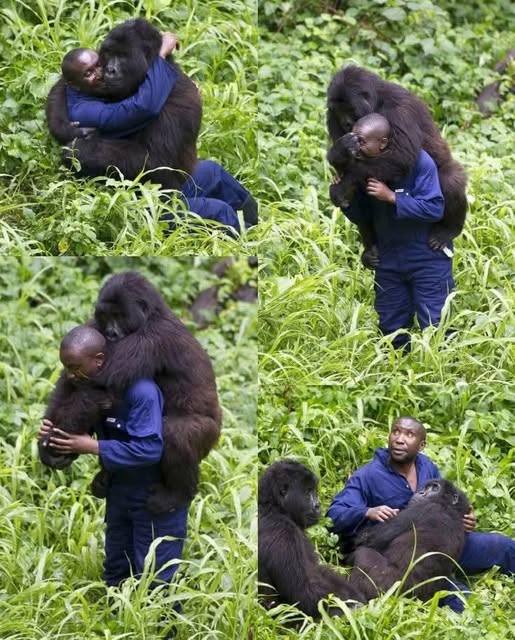
Deep in the dense rainforests of the Democratic Republic of Congo (DRC), mountain gorillas—some of the gentlest giants on Earth—face a constant threat from poaching and habitat destruction. Yet, fearless park rangers risk their lives daily to protect these magnificent creatures, often supported by the United Nations’ global conservation goals aimed at preventing biodiversity loss.
The Last Refuge of the Mountain Gorilla
Once widespread across Central Africa, mountain gorillas are now restricted to a few national parks along the borders of DRC, Rwanda, and Uganda. Over the past century, they have faced relentless hunting, disease, and habitat loss. In 1989, their global population had dwindled to just 620 individuals, placing them on the brink of extinction. Thanks to dedicated conservation efforts, the population has risen modestly to 880 today—but the struggle to secure their survival continues.
One of their remaining sanctuaries is Virunga National Park, home to the Munyaga gorilla family on Mount Mikeno. It was here that our team was granted unprecedented access to witness the daily lives of these endangered primates.
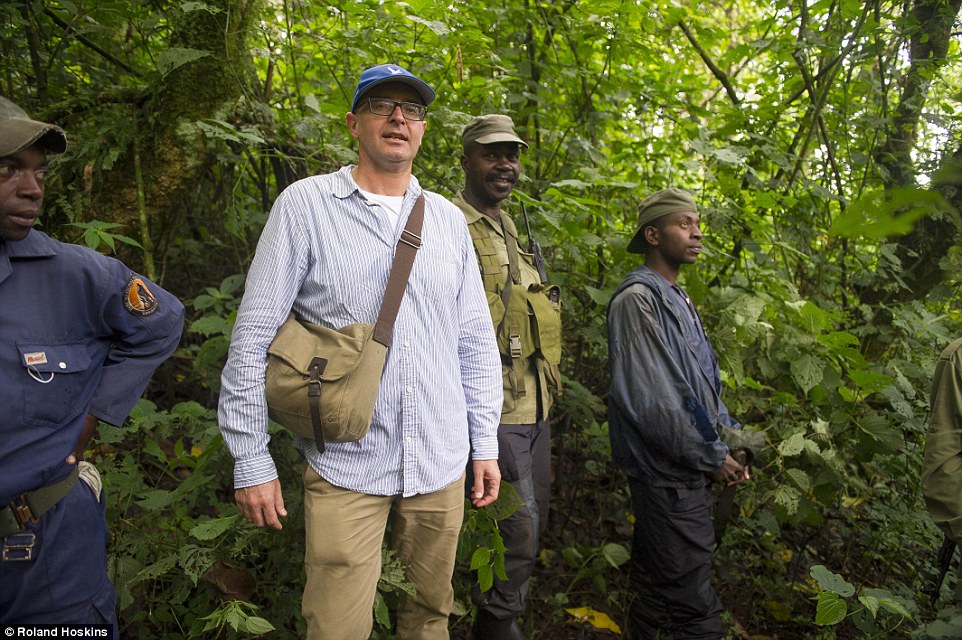
Meeting the Gorillas
Sitting in the shadow of enormous trees, we encountered the youngest members of the gorilla family. A baby gorilla, cradled in its mother’s arms, looked directly into our eyes with curious innocence. Unconcerned by our presence, it playfully kicked its legs, safe under the protection of its family.
These gentle giants are not only physically imposing—an adult silverback can easily overpower a human—but they are also remarkably peaceful. Their passive nature, intelligence, and social bonds contrast sharply with the threats they face from humans.

Poaching and Conflict: The Human Threat
Despite their gentle demeanor, mountain gorillas are under constant threat. Poachers hunt them for meat or capture infants for illegal wildlife trade. Local conflicts further endanger their habitats, particularly in regions of eastern DRC, which has suffered decades of warfare. Forests are cleared for charcoal, a major fuel source, which can generate up to $30,000 monthly for insurgent groups.
In 2007, for example, seven gorillas were killed within two months, an event the local community described as a “massacre.” Such incidents underscore the precarious situation these animals face, despite conservation efforts.

Courageous Conservation
It is not only the gorillas who demonstrate bravery. Rangers and park staff place their lives on the line to protect these animals. In the past decades, roughly 140 conservationists have died defending gorillas from armed groups and poachers, including skirmishes near Lake Edward in northern Virunga. Their courage ensures that gorilla families, like the Munyaga group, continue to thrive despite adversity.
The dedication of these rangers, combined with the work of international organizations and the United Nations’ Sustainable Development Goals (SDGs), particularly Goal 15 on life on land, seeks to protect, restore, and promote sustainable use of terrestrial ecosystems while halting biodiversity loss.

Daily Life in the Mountains
The gorillas are uniquely adapted to life in the mountainous rainforest. Mothers like Nyabigoro navigate steep slopes with ease, using their strong arms and short legs to move through the dense foliage. Their thick fur protects them against heavy rain and cold nighttime temperatures.
Young gorillas play and explore, climbing over their mothers and siblings, while adults forage for leaves, shoots, and tree cores. Despite the harsh environment, the gorillas demonstrate tranquility, curiosity, and social bonds that mirror human family structures.

Experiencing the Gorillas Up Close
Visiting the Munyaga family requires trekking through nearly impassable jungle, climbing 45-degree slopes, and navigating thick vegetation. Rangers guide visitors, using gorilla calls to signal safety and reduce stress on the animals. Sitting quietly among them, one cannot help but feel awe at their size, strength, and gentle nature.
These encounters also highlight the contrast between their immense power and their choice of peaceful coexistence—an important reminder of humanity’s responsibility to protect them.

The Broader Fight for Survival
Mountain gorillas are more than just charismatic megafauna; they symbolize the delicate balance between humans and nature. Their survival depends on a combination of local conservation, international support, and awareness campaigns. Programs like those at Virunga National Park and Mikeno Lodge ensure orphaned or endangered gorillas receive care and protection, helping to rebuild the population for future generations.
The Role of Global Conservation Efforts
The United Nations has placed conservation at the heart of its Sustainable Development Goals (SDGs), replacing the earlier Millennium Development Goals. Goal 15 specifically emphasizes sustainable forest management, reversing land degradation, halting biodiversity loss, and protecting ecosystems.
By linking conservation efforts with global policies, organizations aim to provide both funding and strategic support to local rangers, reducing poaching and safeguarding habitats. These initiatives, combined with grassroots work, have prevented the total extinction of mountain gorillas and offer hope for their long-term survival.

A Glimpse into a Precious World
Observing gorillas in their natural habitat is a humbling experience. Their interactions, curiosity, and playful behavior reflect a highly intelligent species capable of deep social bonds. At the same time, the risks they face from humans—poaching, habitat destruction, and conflict—are stark reminders of the fragility of life in the wild.
The courage of rangers, the dedication of conservationists, and the enforcement of international protections collectively work to secure a future where these gentle giants can roam freely in the highland forests of Central Africa.
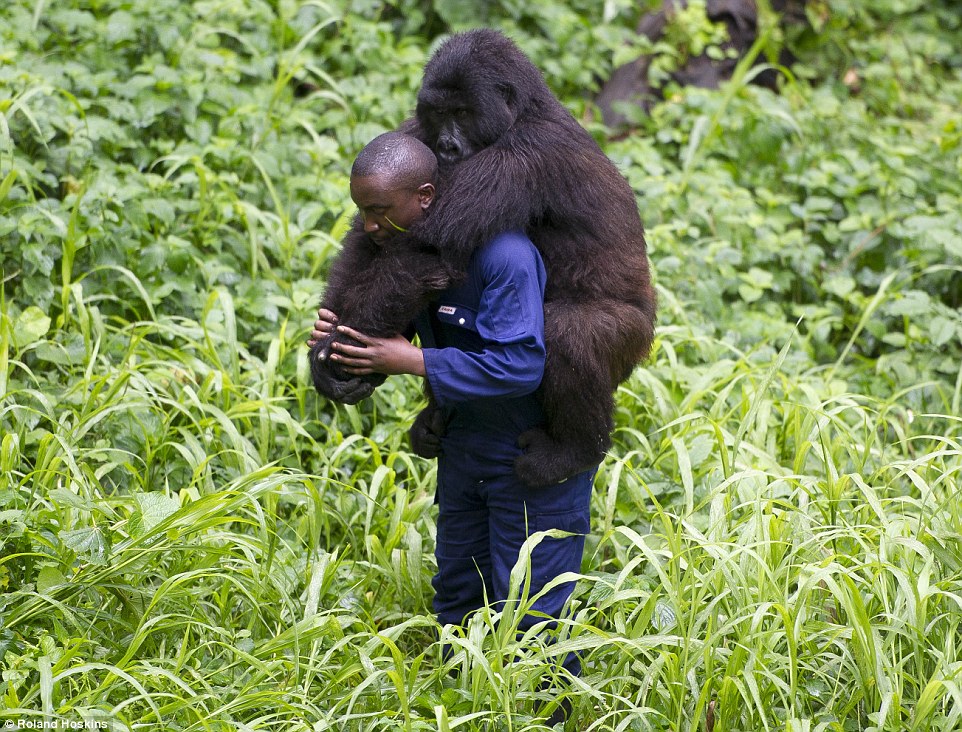
Conclusion
The story of the mountain gorillas of Mount Mikeno is one of survival, resilience, and hope. It is a testament to the dedication of humans who fight tirelessly to protect a species on the edge of extinction. These gentle giants, once decimated by hunting and war, are slowly recovering thanks to courageous rangers, international support, and global awareness.
For anyone fortunate enough to witness them in their natural environment, the experience is unforgettable. It is a reminder of why conservation matters—not just for the gorillas, but for the ecosystems they support and the inspiration they provide to humanity.
With ongoing protection and global commitment, we can ensure that future generations will inherit a world where mountain gorillas continue to thrive, safe in the forests they have called home for centuries.
